Art Apéritifs with John Marciari
Chief Curator & Head of Prints and Drawings at the Morgan Library & Museum
Welcome to Art Apéritifs, 21st & 18th’s newest monthly newsletter segment where we interview museum curators from institutions around the world after a long day of work, over cocktails.
Readers, join me (LLW) in warmly welcoming Art Apéritifs’ intrepid first guest: John Marciari of the Morgan Library & Museum.

John Marciari is the head of the department of Drawings and Prints and the chief curator at the Morgan Library & Museum. He's a specialist of Italian art and the author of many exhibitions and books including major studies of artists such as Piranesi and Tintoretto as well as surveys such as his Art of Renaissance Rome: Artists and Patrons in the Eternal City; for some, he is also known for having discovered an important painting by the great Diego Velazquez in the storerooms of the Yale University Art Gallery. Prior to coming to the Morgan, he held a number of curatorial posts at Yale and at the San Diego Museum of Art. He is a Fellow of the American Academy in Rome
Readers, if you have not yet gleaned it, John is impressive.
Impressive, first, because he agreed to meet with me in New York City this past September to chat about all things curatorial, and next, given his experience and how such illustrates a commitment to the art world and, above all, a love of learning, teaching and sharing.
In Art Apéritifs, we are digging into John’s diverse experience within the arts and museums and honing in on what it means to be a curator and work, care for and research a span of artifacts, from paintings to drawings to books and manuscripts.
First, let us rewind.
19 September 2023, New York, New York, USA
It is the beginning of autumn in New York City, mid September, yet despite everyone’s desperation for sweater weather, it is warm outside. I am on the subway headed from Williamsburg to Manhattan. Midtown specifically. It is Climate Week and the streets are crawling with more blacked out SUVs than usual, oh and loads of private security teams. I am wearing a pair of fabulous black sueded, square toed and tasseled pumps that deliver the most delicious clicking sound on the midtown pavement. I roll up to an NH Collection hotel, saunter through the double set of doors and crane my neck for the bar, a lovely lobby bar, I soon find, quite spacious. I sit down and anticipate the arrival of the Morgan Library & Museum’s Chief Curator.
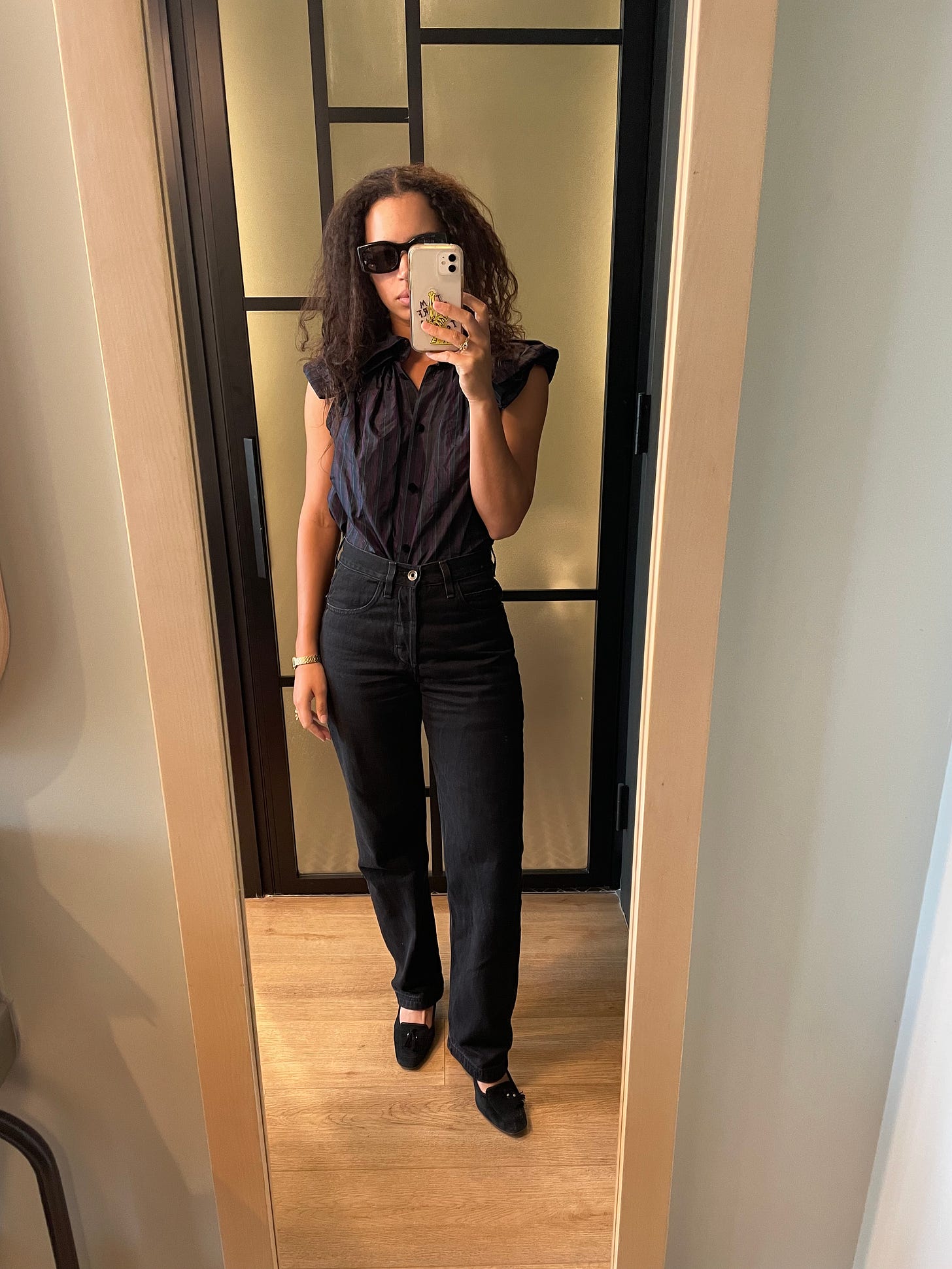
When I meet with Mr. Marciari, he, to me, encapsulates that New York grace, you think might be dead but is actually bottled and preserved in the hearts of true New Yorkers. He drinks a Grey Goose martini with a lemon twist and wears a lovely, well tailored suit in somber colors - appropriate for his role at The Morgan.
We greet one another, receive our drinks with appreciation and I press play on my iPhone’s Voice Memos app.
LLW: In my experience, many people are intimidated by cultural institutions, like museums and libraries, they might feel they need to be quiet or serious in museums, and generally don’t know precisely what a curator is or does. So let’s begin broadly. What is a curator? And as a curator, what do you do at the Morgan?
JM: Can I go back to the part about being quiet in museums? Because I am forever being shushed in my own exhibitions. I just don’t buy it, I don’t buy that museums are some reverential place. It’s not a church, it’s not a library…anyway.
So what do I do? [sigh] A curator takes care of a collection, and that can mean a lot of different things. It can mean doing research on the objects that are already in the museum’s collection. It can mean doing research to think about acquiring new objects, by purchase - we could talk about the art market until the cows come home. It also means working with donors because most museum collections grow more by gift and bequest than they do by purchase. [Curator’s jobs] certainly include, in most cases, and certainly in mine, doing exhibitions, taking some of the research you do on a collection or taking a new acquisition and putting it in context and telling a story to the public. That’s what an exhibition is, it’s taking museum objects and constructing a story out of them and presenting that to the public. Most exhibitions these days also have books, so I’m a writer too1.
LLW: Anything of yours we should be reading?
JM: I write catalogs, the books that go along with the shows. Increasingly the books stand adjacent to, or stand alone, [to the exhibition]. My most recent show was on the artist Piranesi, best known for his prints of Rome. I was writing about his drawings and while the book came out at the same time as the exhibition on his drawings, the book is one thing, the show is another. They go hand in hand. It’s not only the discussion of the works in the show..
LLW: The exhibition catalogs stand on their own.
JM: Exactly, and that is increasingly a trend because we recognize that we do all of this work to present an exhibition and the public for that [show] may be much bigger than the number of people that visit the museum over a 3 or 4 month run and the book is the lasting monument that can be read by people everywhere and over a generation2.
There is also a lot of museum work people don’t recognize, which is the life of the museum. The bureaucracy of the museum, all of the museum management: the budget meetings, administration meetings - all of that. A big part of my job as a Department Head is training a next generation of curatorial fellows and junior curators - this is something that the Morgan does particularly well. It fits with the Morgan’s nature as a place that started with a library and research center and has morphed, recently, into a museum. That sense of scholarship and of training the next generation is very much part of our identity here.
LLW: How about your role as a Curator day to day? What do you do?
JM: What I do in any one day changes day to day and season to season.
One of the quirks of the Morgan is that virtually the entire collection is works on paper. Which is really cool and intimate, but it means you can only show things for 3 or 4 months at a time, usually, because a responsible stewardship is that you don’t show paper forever…light degrades the paper and fades the inks. Whereas a paintings museum puts the paintings up and the permanent collection galleries can stay the same for years at a time. Almost everything3 at the Morgan changes every 4 months. That’s great, because there is always a new story and something new for visitors but it does keep us tied to this constant cycle of coming up with new stories and exhibitions.
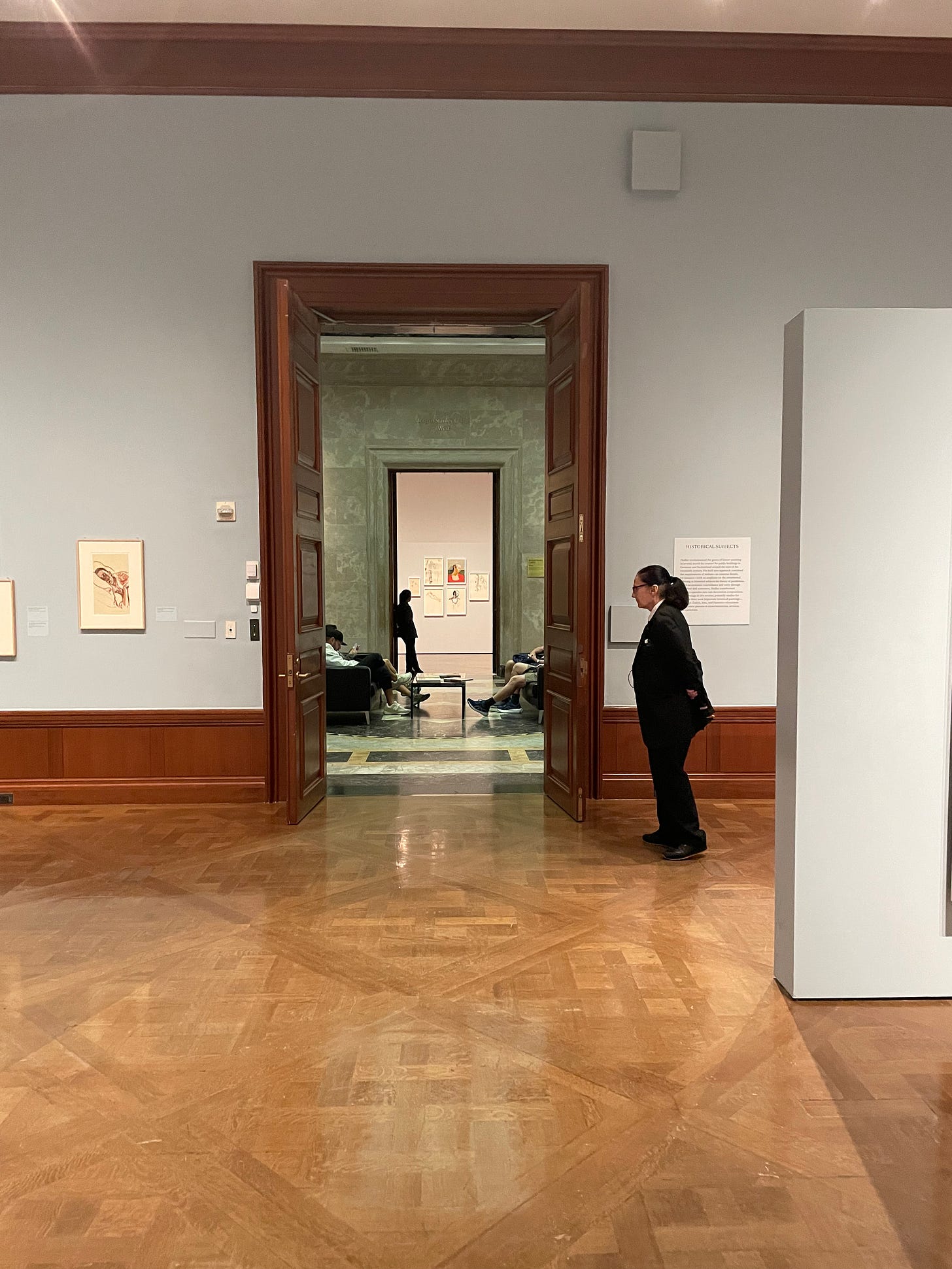
The Morgan is not like other museums. It has the library and the museum and Pierpont Morgan - JP Morgan - was the greatest collector of everything in the world, during his lifetime. But his paintings, for the most part went to The Met, and his decorative arts went to The Met or The Wadsworth Atheneum4...
LLW: Fantastic Museum.
JM: Great museum.
What the Morgan Library has now is stuff that [JP Morgan] kept in his private library at home, and it is much more intimate and a story of the creative process, though we're not limited to Morgan's collections alone: we continue to build the collections even today. So not the finished painting but the drawings that lead up to those paintings. The literary manuscripts, the working drafts of [Charles Dickens’s A Christmas Carol, for example, complete with the scratching out and scribble and margin notes. Musical scores, where again you totally see the personality of the author.
LLW: Those were amazing. Berlioz is a bit of a thundercloud.
JM: So that’s the Morgan. It’s really a museum about the creative process across music, literature, history and art. I don’t think there is anywhere else like it.
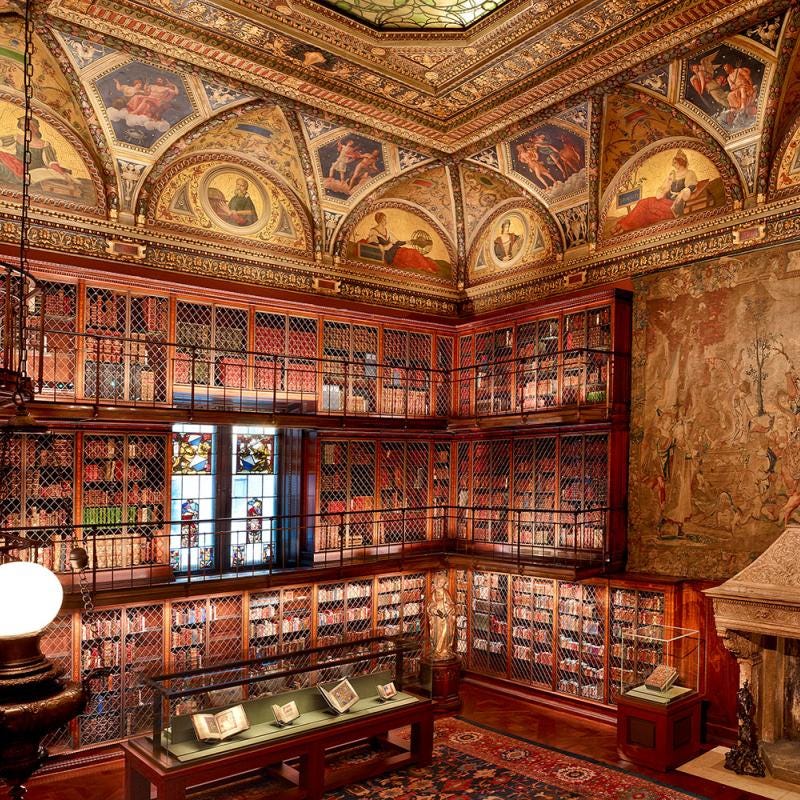
LLW: The most magnetizing thing about the Morgan, to me, is the fact that it is a museum about the creative process. While I was visiting today, I was really drawn into the people behind the artifacts, and noticed the bust of JP Morgan’s personal librarian, Belle?
JM: Yeah. Belle da Costa Greene.
Belle’s story is incredible. Next year, 2024, is our centenary year, it’s our 100th anniversary, and we are celebrating our history, as one does, and the biggest exhibition of the year is a show about Belle Greene. Her personal biographical story is unbelievable and famous and much touted lately: there’s that book The Personal Librarian, which might become a movie. But what no one who has written about her has had access to is her professional life, because that is in the archives of the Morgan. It’s her working with dealers, her correspondence with colleagues. There is this whole side of her, as a professional figure and how well respected she was in the field. That isn’t really in the books about her - there is much more about Belle to come.
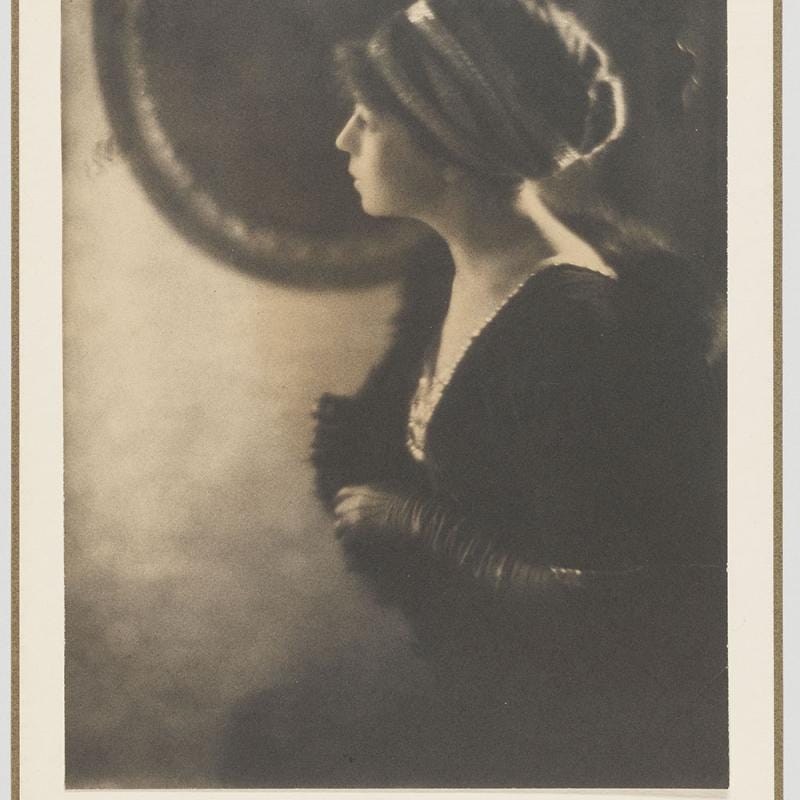
LLW: The word ‘curator’ gets used a lot in everyday language, ie. to describe how one decorated a living room or a brand feng shui-ed their social media. When did you know you wanted to become a curator, and specifically work in museums?
JM: ‘Curator’ in its narrowest form means caretaker.
I am the caretaker of European drawings. Caretaker of the collection that exists, stewarding that collection through research, working with conservators to make sure it’s preserved, registrars to make sure it’s cataloged, expanding the collection through purchase, gift, and presenting the collection, through exhibitions, to the public. I’m taking care of it.
LLW: It all makes sense, but people don’t know or consider that curators are custodians, researchers, science minded, and team players connecting all of these individuals within the museum to care, clean, store, restore the collection etc. You’re also kind of a sales person…
JM: Sell it to the public. Sell the acquisition to the prospective donor. Yeah, you’re the spokesperson for your collection. And the funny thing is, some of us gravitate toward doing this…as there was, traditionally, a split in art history, between those who teach, which tends to be highly theoretical and critical, and those who got into art history because they love the objects. Those people, like me, tend to gravitate toward museum work because we love the stuff. Whatever it is, drawings, manuscripts, paintings, sculptures, spoons..!
LLW: I’m with you, I love the objects. At 21st & 18th I have this little segment called, Vintage Finds, and I go and unravel the history behind this thing and that, and just love that hunt and discovering who is behind the making of this piece or who may have owned it or where it traveled.
JM: Personal stories…
LLW: Yeah!
JM: You don’t, usually, grow up dreaming about being a curator. Some fall into it.
LLW: How about you?
JM: My father, as a young man, worked for a company called Bocour Artist Colors5. Bocour was then one of two companies in the US, this is the late 60’s here in New York, downtown, that made artist paint: oil paint and acrylic paint. Bocour was run by two guys, Leonard Bocour and his cousin, Sam Golden6, who is the chemist who created the paints. Among other things, Sam invented acrylic paint for artists. Leonard had the money and Sam was the chemist.
So when Helen Frenkenthaler7 wanted paint that would bleed into the canvas but not leave oil tide lines, she went to Sam and said, “Sam, can you make me paint that does this?”, and Sam literally created the paint.
LLW: And Voila!
JM: So Sam was one of my dad’s best friends. And when Bocour blew up a little bit, Sam retired to his farm in upstate New York. I spent weekends up there and he was sort of like my grandfather.
He was a larger than life character. He had this mane of white hair, stained from smoking his cigar… I grew up around stories of painters and paint as this very real thing. You know, paint is a thing that can be made and manipulated. I was an eight year old that took oil painting classes, because that was the thing that got talked about, but not in any fancy way…
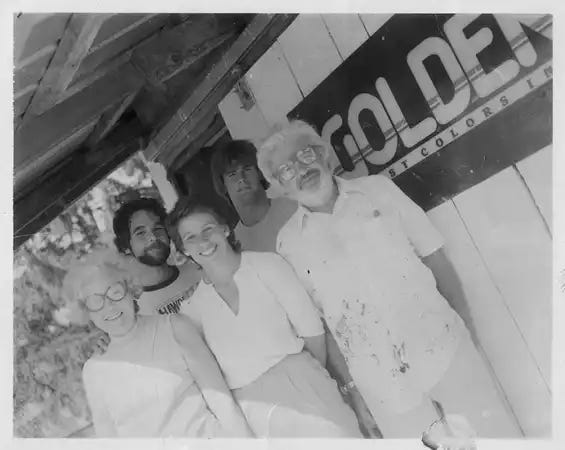
LLW: It was tactile
JM: It was tactile, it was practical, it was personal. It was real.
It’s not like I come from…some curators come from families of collectors who grew up around objects. That’s so far from where I am, but I took painting lessons and then I was growing up on Long Island and as soon as I was old enough to get my own train into the city. I would go to museums.
I went to the Morgan for the first time as a high school student, by myself, which was hard, it was terrifying. It was such an intimidating place…that first time I was terrified.
Going back to me saying I am forever getting shushed by others in my exhibition galleries: there is a mystique to museums, but I don’t believe museums should be scary places.
LLW: Agreed, I sometimes wish there was music or something to provide a cloak of anonymity for people while they’re in museums. So they feel comfortable to have a conversation and don’t necessarily have to be quiet or move past a painting or sculpture quickly.
JM: Well, how do you learn how to behave in museums? The modern world of museums is working very hard to be more equitable and accessible.
There is a virtue to quiet looking…people are reading the signage, taking it all in, thinking about it and that has to be preserved. But [museums] don’t have to be a place where if you’re with someone and want to talk about things, you need to feel afraid to talk.
LLW: So in one of the Morgan’s current exhibitions, Into the Woods…I loved that your department and colleagues placed the plaques around the galleries that stated “If you would like a closer look, pull out your phone and zoom.” It was like someone reminding me, “You can do this!” Take a photo, look at the details.
JM: Like saying, “It’s all okay!” We actually have a sign in most exhibitions that reminds viewers non-flash photography is allowed. We love when people take photos of our collections.
LLW: What are you working on at the moment?
JM: The Morgan, like most museums, has the exhibition calendar set 3 years in advance. At any one moment we are working on at least two exhibitions. The one that is going to open next month, and the one that is going to open in 9 months.
[At this time we are interrupted by the energetic bartender who asks if we would like a second drink. John and I are here for the sake of the arts, and regretfully decline a second cocktail - eye of the tiger, baby]
I am working now on a show that opens in a month. Final touches on labels, layout, all of that, but I am also finishing the book of a show that opens next July [2024]. Because books are on an 8 - 12 month production schedule, but you're working on the exhibitions themselves up to the day they open. And then I’m having a phone call tomorrow about a show that might happen in 2026.
LLW: Wow, crazy…
JM: So you’re always sort of thinking in layers. The process for any, big, exhibition is about 3 - 5 years.
LLW: That I think is super important, as the general public assumes museums move slowly, but what they don’t think about is that museums, like a business, think strategically about the next year’s experiences, performance, goals and so on.
JM: Right. And a mix of exhibitions, so what is going to happen in the summer of ‘25, and, in the case of the Morgan, how do we put together something that is artistic with something that is literary, or how do we put something that is 21st century with something that is 16th century - to, frankly, maximize our audiences but also, because we think that someone who might come for 16th century Italian drawings will find 20th century poetry fascinating. As I’ve said, the Morgan is unlike anywhere else, where you can experience both of those things at once.
LLW: It’s cool to discuss all of this, as most people are not able to sit down with a curator in this way. Learning about your work and role, it’s so important to me to underline that curators have to be such a hybrid - thinking about the collection, visitor experience, working with so many teams at the museum, even budgets!
JM: A good curator also has a sense of what is realistic and practical from a budgetary standpoint, and not all curators manage the budgets. I’m a realist…
LLW: Maybe that’s the New Yorker in you?
JM: It is…I’m also the Chief Curator at the Morgan, that means I’m the Curatorial representative on the 5 person senior leadership team. So I sit in on all the budget meetings and it’s always a scenario of the chicken and the egg..where the money is coming from, how much money needs to be raised. Every museum has an endowment…but [what people may not know] that only pays for about ⅓ of the annual OPEX. The rest of the budget is raised or earned. I’m rambling…
LLW: Believe me, this is great, you’re a fantastic interview. It’s fascinating to think about museums and their exhibitions from this perspective.
JM: Another practical example of planning exhibitions. Take my last show on the artist Piranesi8. The traditional way to build an exhibition would be to go out and borrow from museums around the world, special, big names and grand, impressive objects done by the artist or artists you’re presenting.
What I did for that exhibition was use the rich collection of the Morgan - drawings, studio notes, scribbles, to answer the question: what do these surviving items tell us about the artist? Also, what was on the back of these drawings? What did he write, keep, throw out? What was important and part of the studio archives…That is my approach, and that is why I love drawings. It is the look behind the scenes. As a historian, not just an art historian, what does this body of evidence tell us?
To do an exhibition on what a collection of objects tell us about an artist, rather than what is the most impressive set of objects I can hang on these walls. That is how I think about it. That to me is a human story, you don’t have to care about Piranesi to find the story about how this guy in the 18th century is trying to solve problems…it’s interesting to read about even if you’ve never heard of Piranesi.
I think it goes back to my experience and cooking up paint [with my dad and Sam]. A human story.
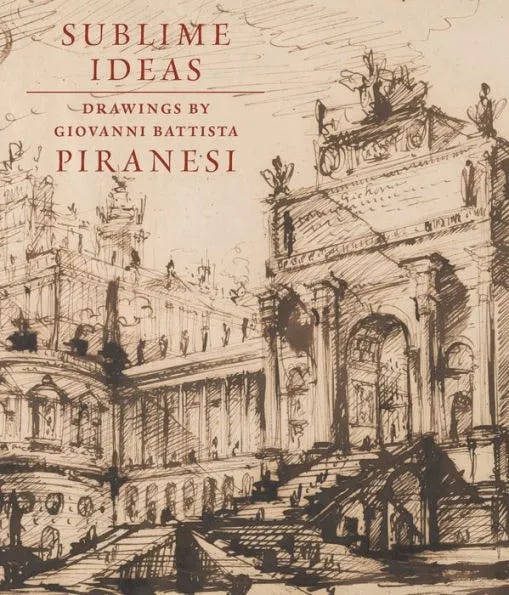
LLW: Funnily enough, my brother, who founded Imperfects, always says that he designs and builds products for ‘The Human Experience’...it’s a similar study or approach. How humans are living, creating, thinking. Listening to you, it’s so interesting to hear you approach an exhibition by thinking, “What does this evidence tell us?”, you’re using the collection or objects to answer a question or demonstrate something.
JM: Museums tell stories, museums do not tell the only story. Museums are not omniscient, they tell one story. And every exhibition is touched by every member of the museum staff. For the public, it can be helpful to state that ‘so and so’ came up with this interpretation, but not one person can take all the credit. There is the designer, the person who raises money to make it happen, the registrar who tracked the movement of loans in and out of the building, there’s the administration who makes all of this possible, editors who take all of the content and clean it up…it’s a huge performance.
LLW: That takes a big team. A lot of people. How many people work at the Morgan?
JM: It does, but you cannot compare the Morgan to large museums, with very large teams. We’re a mid-size museum…About 120 staff and 20+ curators.
LLW: Man, 20 curators!
JM: Well, it’s partly because we have everything from ancient Western Asian seals to contemporary literary manuscripts.
LLW: The seals were a crowd favorite, people were digging them, it was fascinating to learn about them.
JM: I’m constantly amazed at the things my colleagues activate in our collection. Also, Morgan was a smart collector…and the seals are all about the history of communication which relates back to the Morgan collection being focused on the creative process.
LLW: Speaking of the creative process, when you’re creating an exhibition, how are you thinking about the visitor experience?
JM: I mean I’m always thinking about it. Exhibitions always have to tell a story, for a variety of different people.
I was lucky enough to have mentors [in this field] who encouraged me to go and sit in galleries and your exhibitions spaces and observe how people experience the space.
For the person who really wants to take the deep dive and read every label, the labels should tell a story and build upon one another…but there’s also some people who go into a gallery and directly toward the work in the middle of the wall. You can try to control the visitor by giving them good sight lines, and if they are only going to look at five things, which things are best for them to look at. There is no way to learn that [as a curator] unless you have someone to teach you. How high do you hang a work of art? If you’re stacking works, which do you hang on top? These are silly little things you do as a curator, but that really do affect the visitor and their experience. This example is probably where we see the modern usage of the word ‘curating’ stem from, by the way we organize things in the gallery.
LLW: Yes, people state, “I curated this room, or wall” etc…
LLW: Okay, big, hairy question: What is your favorite museum? Any museums or experiences that you are looking forward to in the coming months?
JM: Oh, that’s a terrible question! It’s impossible. I hate the idea of favoriting…I don’t have a favorite anything.
LLW: [laughing] Maybe an experience, museum or exhibition, that was profound for you?
JM: When I was young, I was really taken with the Cloisters Museum9, uptown. In High school and college. Something about learning about the medieval world meeting with a monastery that was alien and fascinating. Stands out in my mind from when I was a teenager. But as I also mentioned I came to the Morgan as a teenager which was nerdy and different, a bit scary, but memorable.
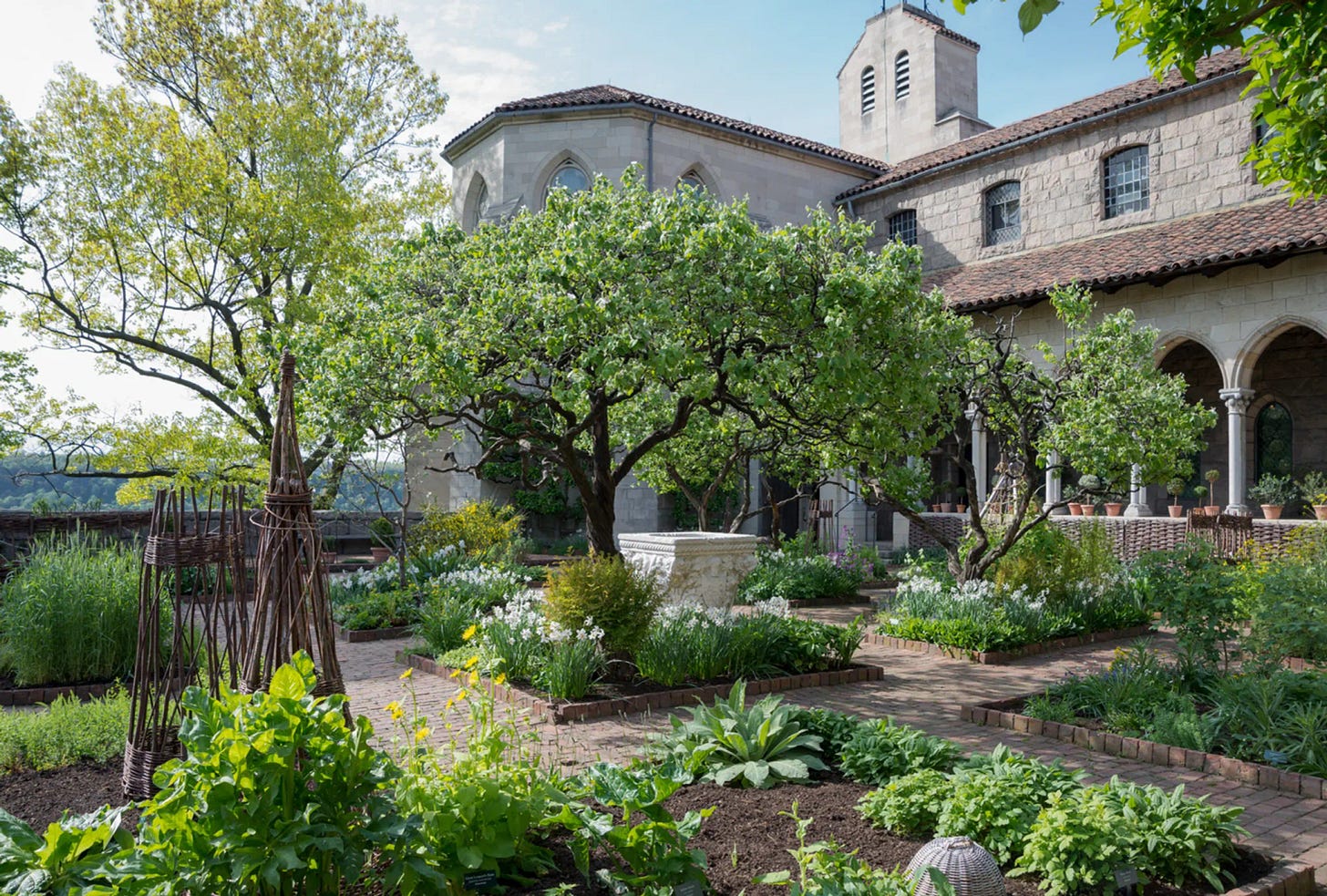
LLW: Especially solo! Random question, any favorite cities in the world for museums?
JM: One of my favorite cities in the world is Rome. Rome is continuous from antiquity to now, but still a living city. A big, messy, and living city, around every corner and turn…it’s a miraculous city. And London. London is a city I go to often, for work and things. Rome and London, after New York, are the two cities where I would like to spend the most time.
LLW: And next time our Reader is visiting the Morgan Library & Museum, where should they begin?
JM: The original library, a little hidden in the back, is the place to start. That’s where we start, that’s where the history starts. It’s one of the greatest spaces in New York, one of the great interiors. Then move on to Morgan’s office/study.
LLW: Which also where the Boticelli is…
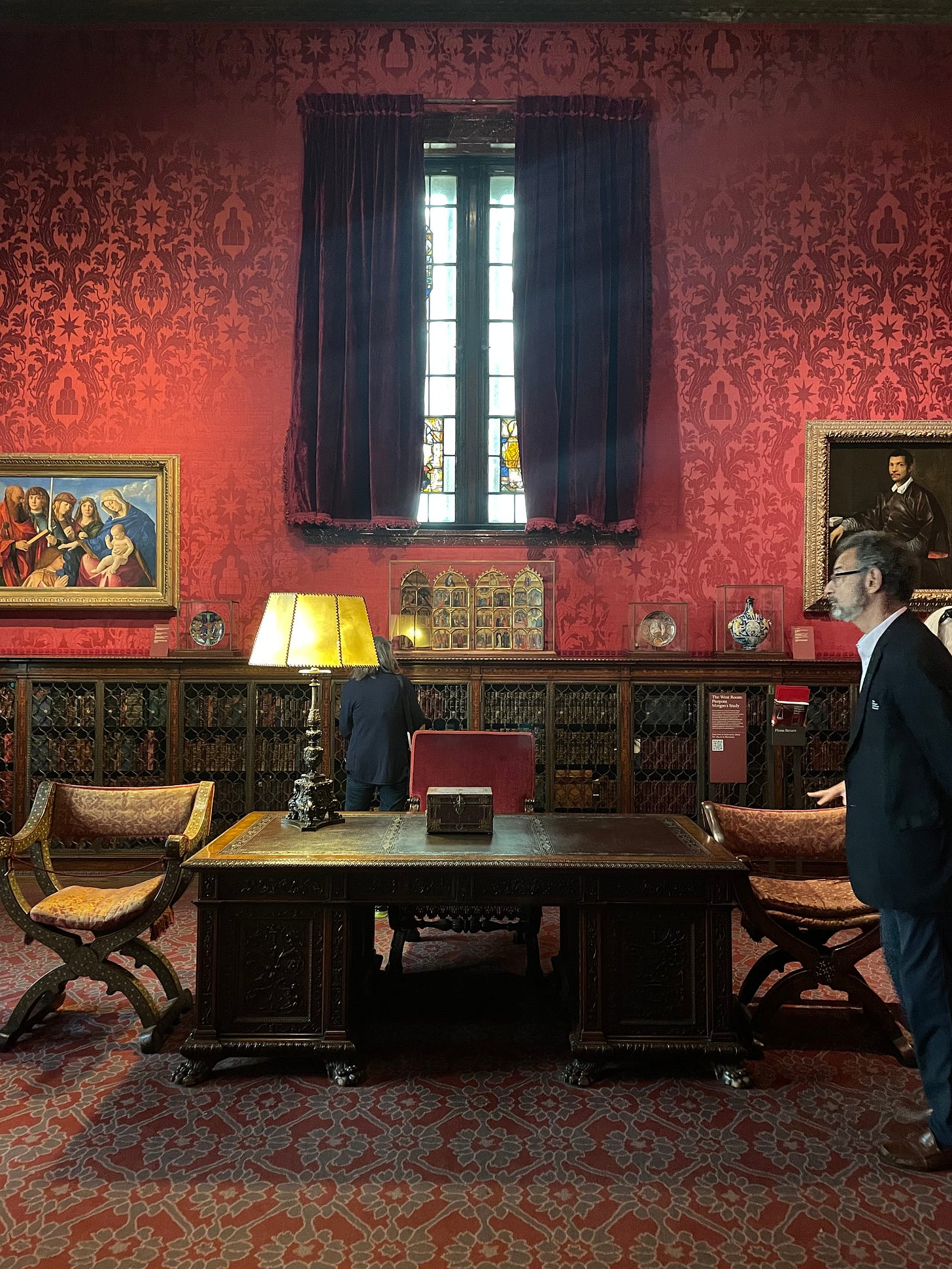
JM: Yes! As it is in the back, people usually end there, but the library is the place to start. It’s different in character and material. From there, visit the special exhibition galleries.
The Morgan is small enough you can get to all of the galleries, and usually the shows are so different from each other, if you’re the sort of person that enjoys learning about stuff that you maybe didn’t know or consider was interesting. If you’re going to see one of the shows, we hope you’ll enjoy the other exhibitions.
LLW: Last Q, I find myself obsessed with topics/historical figures/art genres etc. In my obsession phases I devour as much information as possible on said topic. Anything you are ‘obsessed’ with right now?
JM: What’s my current rabbit hole? [Pause for consideration]
Slightly different answer, which may or may not work for you…I’ve done recent shows on big name artists but I’m also working on a project about a Swedish 18th century sculptor named, Johann Tobias Sergel, that no one outside of Stockholm knows about.
Who is an amazing character, who trained, initially in Sweden, then went to Paris, then spent a decade in Rome. In his decade in Rome in the 1770s, he meets every artist in Rome and then went back home.
He produces neoclassical sculpture of the highest order, but also makes drawings that are a running record, almost like a visual diary, of his entire life. Some serious, some not so serious. All different topics.
This idea of…doing an exhibition on someone no one knows, who can be presented as the most human of characters. Who also makes glorious art, AND who no one knows heard of - that’s the show I’ve been toying with for a number of years that I’m hoping can come together in the coming years.
I’m very lucky in that I work at the Morgan, where a show like that, with that kind of narrative, can work. For the Morgan, it’s sort of our wheelhouse, telling the deep story that will connect to a lot of artists people know and moments and cities, but will be totally new and very human.
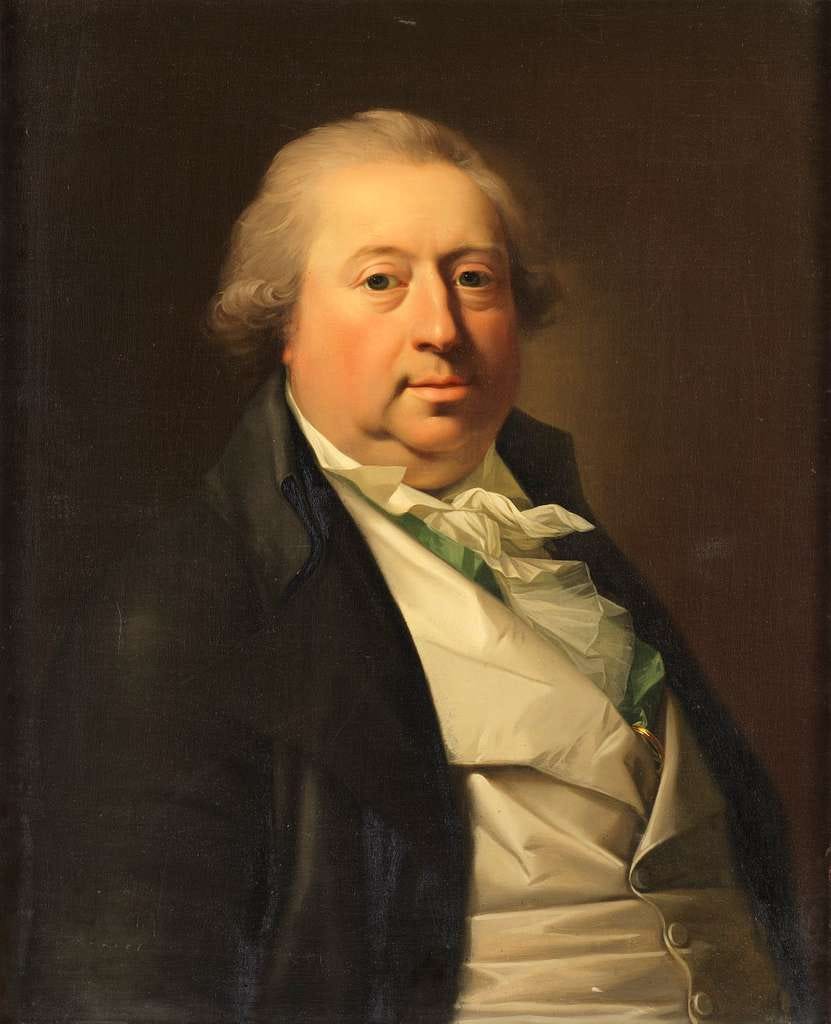
LLW: Alright, Sergel.
JM: Johann Tobias Sergel.
LLW: I know who I am going to go home and Google tonight.
16 October 2023, San Diego, California, USA
Meeting John really inspired me.
He was so enjoyable to speak with and share pre-dinner drinks alongside, plus his knowledge of museums, drawings, artists, Italy - it inspired me to commit to my dreams at 21st & 18th and keep building, keep becoming the expert that I aspire to be.
Thank you, John for peeling back the layers of what it means to be a curator and how you made your way back to New York and the Morgan Library & Museum.
For additional layers of John, he is not just a well decorated historian or enigmatic curator, he is a born and bred New Yorker, 52, father of 19 year-old twins who is a committed athlete running ultramarathons and has mastered the art of patience when he convenes with nature fly fishing in the middle of rushing rivers.
Like all of us, John has a lot of sides. It is wonderful to get to know one of them: John the Curator.
Enjoyed Art Apéritifs? Subscribe below to receive all
newsletters direct to your inbox. Art Apéritifs drops monthly and features a different curator and museum each month.Keen to visit the Morgan Library & Museum?
Pro tip: Reserve a ticket ahead of time, or if you have a flex schedule The Morgan is free on Tuesdays and Sundays between 3.00 - 5.00pm.
Oh and they offer a radical menu of memberships for single households, families, young fellows and more - the Contributor membership has some excellent perks, such as event invitations, that are very enticing to me. Also, their cafe is fantastic, perfect place for a crisp glass of post-museum-crawling white wine.
On your next visit to the Morgan, keep an eye out for John, sitting in the special exhibition galleries, he is likely the guy in a nice suit getting shushed.
Thanks for your time.
Cheers,
LLW
Many of Marciari’s recent books have been published in partnership with Paul Holberton Publishing, see his most recent exhibition catalog on Piranesi - spoiler, it’s beautiful and would look excellent on your coffee table
This is important - the exhibition’s experience and impact continues - I love the idea that generations of people continue to experience an exhibition
Underlining this bit, because this is crazy - consider how much thought, time, money goes into storing and keeping works on paper in good condition. Also, imagine if your favorite museum had none of their paintings or sculpture - just works on paper! I could go on for ages…
Fabulous museum in Hartford, Connecticut - run don’t walk!
Found this interesting article about Bocour Artist colors from Wright State University
There is also this read about the company Golden formed in the 1980s, Golden Artist Colors - high recommend taking the time to read this article and that from Footnote #5 for more context
(1928 - 2011) Epic American abstract expressionist, she is known for her experimentation with color. Check her out.
This exhibition by Marciari, Sublime Ideas: Drawings by Giovanni Battista Piranesi, is available for review on the Morgan’s website and the accompanying catalog is available for purchase here
The Met Cloisters - again, run, don’t walk if you have not yet been



